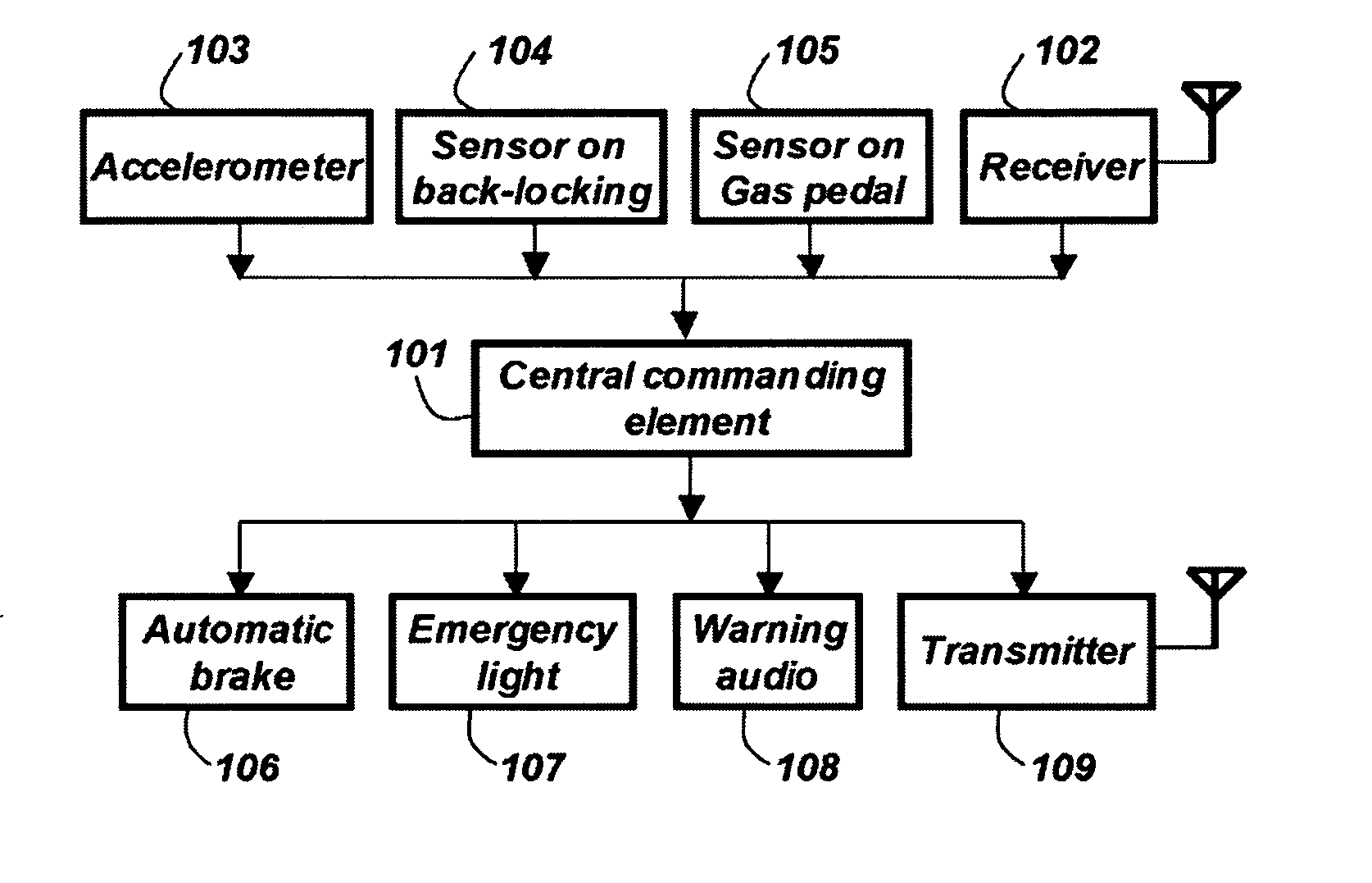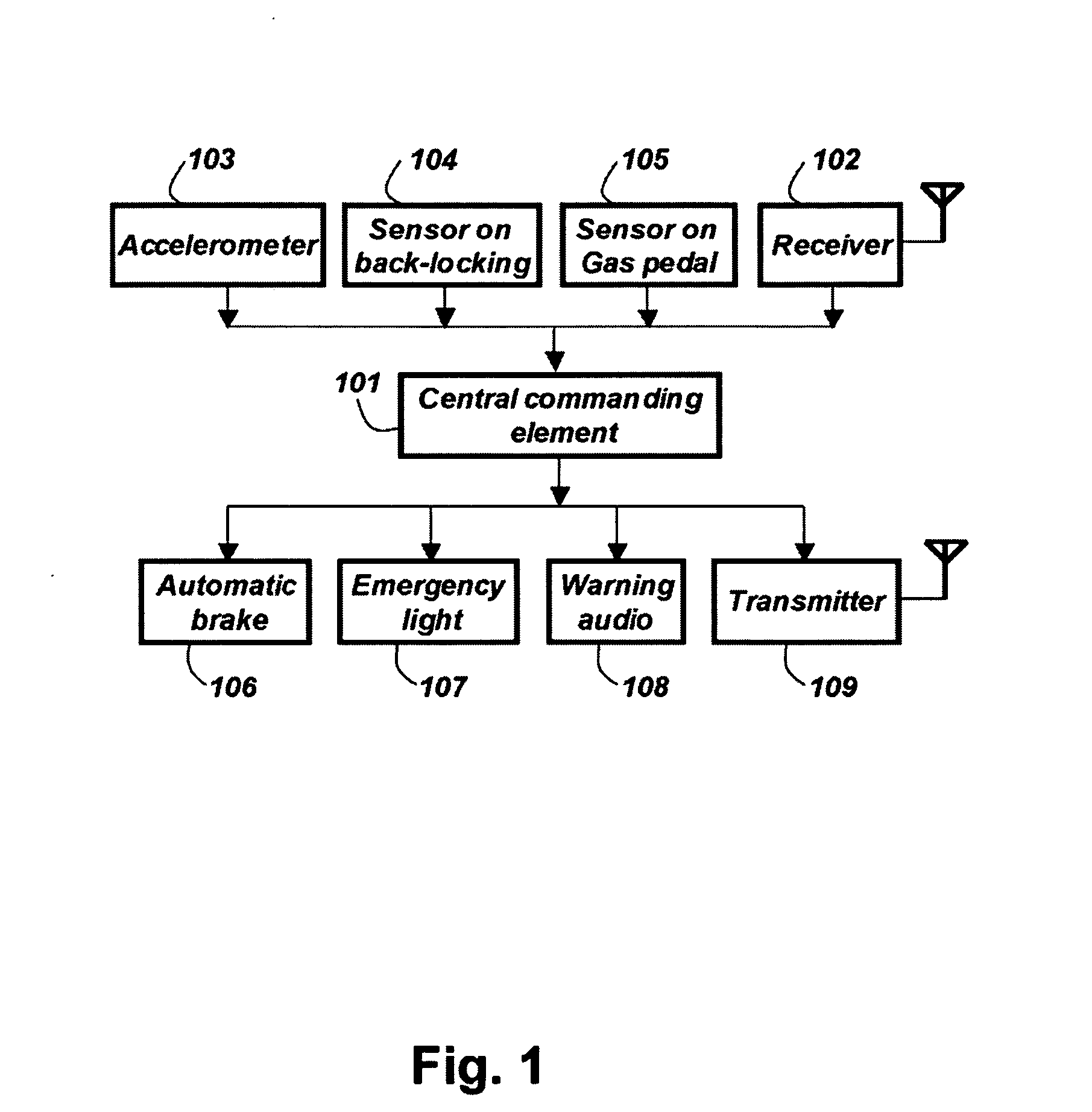Anti-collision Emergency Braking System
a technology of emergency brakes and anti-collision vehicles, applied in automatic initiation, transportation and packaging, instruments, etc., can solve the problems of significant delay for the driver to brake, the reaction process could be fatal, and the brake lights do not tell the trailing driver
- Summary
- Abstract
- Description
- Claims
- Application Information
AI Technical Summary
Benefits of technology
Problems solved by technology
Method used
Image
Examples
Embodiment Construction
[0024]The following detailed description is directed to certain specific embodiments with reference to the accompanying drawings, in which certain specific embodiments are shown. This invention may, however, be embodied in many different forms and should not be construed as limited to the embodiments set forth herein.
[0025]FIG. 1 is a flowchart illustrating the controlling logic of an anti-collision emergency braking system and its working mechanism. The core part of the system is a central commanding element 101. It takes input from four functional elements: a receiver 102, an accelerometer 103, a sensor on back-locking 104, and a sensor on gas pedal 105. Upon receiving the signals from these four functional elements, the central commanding element 101 will send out control signals to four other functional elements: an automatic brake 106, an emergency light 107, a warning audio 108 and a radio frequency transmitter 109. These four elements will be turned on or off depending on the...
PUM
 Login to View More
Login to View More Abstract
Description
Claims
Application Information
 Login to View More
Login to View More - R&D
- Intellectual Property
- Life Sciences
- Materials
- Tech Scout
- Unparalleled Data Quality
- Higher Quality Content
- 60% Fewer Hallucinations
Browse by: Latest US Patents, China's latest patents, Technical Efficacy Thesaurus, Application Domain, Technology Topic, Popular Technical Reports.
© 2025 PatSnap. All rights reserved.Legal|Privacy policy|Modern Slavery Act Transparency Statement|Sitemap|About US| Contact US: help@patsnap.com



